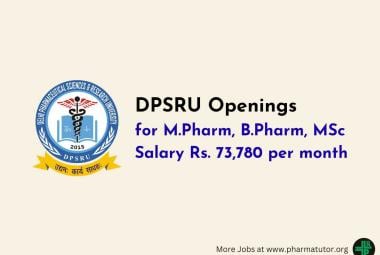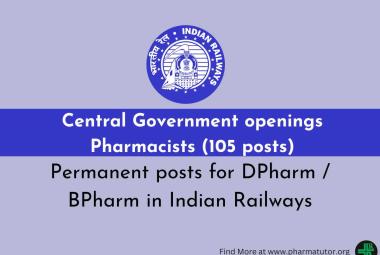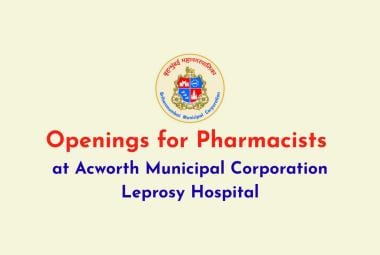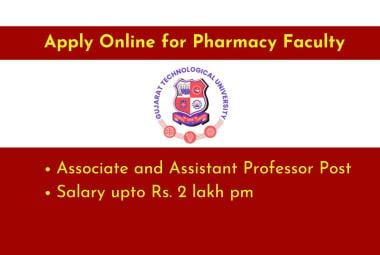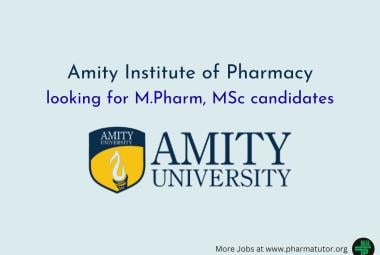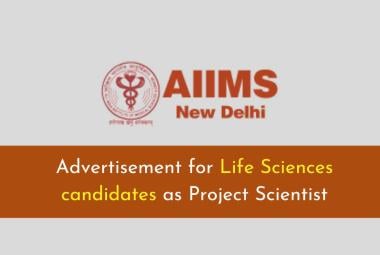About Authors:
Ashish Chauhan*1, Pradeep Arora2, Nisha Thakur3
1,2Indian Pharmacopoeia Commission, Ministry of Health & Family Welfare, Govt. of India, Sector-23, Raj Nagar, Ghaziabad, NCR-201002 (India).
3Abhilashi Institute of Life Sciences, Ner Chock, Mandi, Himachal Pradesh
*ashishchauhan.info@gmail.com
{ DOWNLOAD AS PDF }
Abstract:
The review encompasses the comprehensive portfolio of a drug. It includes the characterization of drug by US-FDA, on the basis of quality, nature, pharmacology and botany.
REFERENCE ID: PHARMATUTOR-ART-2080
WHAT IS DRUG? 1
Drug is thought to originate from Old French "drogue", possibly deriving later into"droge-vate" from Middle Dutch meaning "dry barrels", referring to medicinal plants preserved in them.
In the United States, the Federal Food, Drug, and Cosmetic Act definition of "drug" includes "articles intended for use in the diagnosis, cure, mitigation, treatment, or prevention of disease in man or other animals" and "articles (other than food) intended to affect the structure or any function of the body of man or other animals."
Drugs include:
All medicines for internal or external use of human beings or animals and all the substances intended to be used for or in the diagnostic, treatment, mitigation or prevention of any disease or disorders in human beings or animals, including preparations applied on human body for the purpose of repelling insects like mosquitoes.
The study of drugs and their action on living organisms is Pharmacology.
CHARACTERIZATION OF DRUGS BY US-FDA
US-FDA (United States Food & Drug Association) assigns the drug to one of the following categories:
1. Prescription
2. Nonprescription
3. Controlled substance
Prescription Drugs:
Prescription drugs are drugs that the federal government has designated to be potentially harmful unless their use is supervised by a licensed health care provider, such as a nurse practitioner, physician, or dentist.2
Nonprescription Drugs (OTC Drugs):
Nonprescription drugs are drugs that are designated by the FDA to be safe (if taken as directed) and obtained without a prescription. These drugs are also referred to as over-the-counter (OTC) drugs and may be purchased in a variety of settings, such as a pharmacy, drugstore, or in the local supermarket. OTC drugs include those given for symptoms of the common cold, headaches, constipation, diarrhea, and upset stomach.3
Controlled Substance:
Controlled substances are the most carefully monitored of all drugs. These drugs have a high potential for abuse and may cause physical or psychological dependence.The Controlled Substances Act of 1970 regulates the manufacture, distribution, and dispensing of drugs that have abuse potential. Prescriptions for controlled substances must be written in ink and include the name and address of the patient and the Drug Enforcement Agency number of the primary health care provider. Prescriptions for these drugs cannot be filled more than 6 months after the prescription was written or be refilled more than five times.4
CHARACTERIZATION OF DRUGS ON THE BASIS OF QUALITY5
1. Spurious Drugs
2. Adulterated Drugs
3. Misbranded Drugs
Spurious Drugs:
a. If it is manufactured under a name which belongs to another cosmetics
b. If it is an imitation of, or is a substitute for, or resembles, another cosmetics in a manner likely to deceive or bears upon it or upon its label or container the name of another cosmetics, unless it is painly and conspicuously marked so as to reveal its true character and its lack of identity which such other cosmetics
c. If it purports to be the product of a manufacture of whom it is not truly a product.
Misbranded Drugs:
A drug is deemed to be misbranded:
a. If it is so colored, coated, powdered or polished that damage is concealed or if it is made to appear of better or greater therapeutics value than it really is.
b. If it is not labeled in the prescribed manner.
c. If its label or container or anything accompanying the drug bears any statement, design or device which makes any false claims for the drug or which is false or misleading in any particular.
Adulterated Drugs:
A drug is deemed to be adulterated:
a. If it consists, in whole or in part, of any filthy, putrid or decomposed substance
b. If it has been prepared, packed or stored under insanitary conditions whereby it may have been rendered injurious to health
c. It its container is composed, in whole or in part, of any poisonous or deleterious substance which may render the contents injurious to health
d. If it bears or contains, for purpose of coloring only, a color other than one which is prescribed.
CHARACTERIZATION OF DRUGS ON THE BASIS OF NATURE6
Crude Drug:
The term “crude drug” generally applies to the products from plant and animal origin found in a raw form.
Crude drugs are further classified as:
1. Organized (Cellular) Drugs.
2. Unorganized (Acellular) Drugs.
Organized Drugs:They comprise those drug materials which represent a part of plant and are therefore made of cells.
Unorganized Drugs: They comprise of solid and liquid materials which do not consists of parts of plants and are obtained from natural sources by a variety of extraction procedures.
PHARMACOLOGICAL CHARACTERIZATION OF DRUGS7
ANTI-INFECTIVES
- Sulfonamides
- Penicillins
- Cephalosporins and Related Antibiotics
- Tetracyclines, Macrolides, and Lincosamides
- Fluroquinolones and Aminoglycosides
- Miscellaneous Anti-infectives
- Antitubercular Drugs
- Leprostatic Drugs
- Antiviral Drugs
- Antifungal Drugs
- Antiparasitic Drugs
DRUGS USED TO MANAGE PAIN
- Nonnarcotic Analgesics: Salicylates and Nonsalicylates
- Nonnarcotic Analgesics: Nonsteroidal
- Anti-inflammatory Drugs
- Narcotic Analgesics
- Narcotic Antagonists
DRUGS THAT AFFECT THE NEUROMUSCULAR SYSTEM
a. Adrenergic Drugs
b. Adrenergic Blocking Drugs
c. Cholinergic Drugs
d. Cholinergic Blocking Drugs
e. Sedatives and Hypnotics
f. Central Nervous System Stimulants
g. Anticonvulsants
h. Antiparkinsonism Drugs
i. Antianxiety Drugs
j. Antidepressant Drugs
k. Antipsychotic Drugs
l. Cholinesterase Inhibitors
m. Antiemetic and Antivertigo Drugs
n. Anesthetic Drugs
DRUGS THAT AFFECT THE RESPIRATORY SYSTEM
a. Antihistamines and Decongestants
b. Bronchodilators and Antiasthma Drugs
c. Antitussives, Mucolytics, Expectorants
DRUGS THAT AFFECT THE CARDIOVASCULAR SYSTEM
a. Cardiotonics and Miscellaneous Inotropic Drugs
b. Antiarrhythmic Drugs
c. Antianginal and Peripheral Dilating Drugs
d. Antihypertensives
e. Antihyperlipidemic Drugs
DRUGS THAT AFFECT THE HEMATOLOGICAL SYSTEM
a. Anticoagulant and Thrombolytic Drugs
b. Agents Used in the Treatment of Anemia
DRUGS THAT AFFECT THE GASTROINTESTINAL AND URINARY SYSTEMS
a. Diuretics
b. Urinary Anti-infectives and Miscellaneous Urinary Drugs
c. Drugs That Affect the GastrointestinalSystem
DRUGS THAT AFFECT THE ENDOCRINE SYSTEM
a. Antidiabetic Drugs
b. Pituitary and Adrenocortical
c. Hormones
d. Thyroid and Antithyroid Drugs
e. Male and Female Hormones
f. Drugs Acting on the Uterus
DRUGS THAT AFFECT THE IMMUNE SYSTEM
a. Immunologic Agents
b. Antineoplastic Drugs
DRUGS THAT AFFECT OTHER BODY SYSTEMS
a. Topical Drugs Used in the Treatment of Skin Disorders
b. Otic and Ophthalmic Preparations
c. Fluids and Electrolytes
BOTONICAL CHARACTERIZATION OF DRUGS8
A. Drugs obtained from roots.
B. Drugs obtained from leaves.
C. Drugs obtained from seeds.
D. Drugs obtained from bark.
E. Drugs obtained from fruits.
F. Drugs obtained from flowers and buds.
G. Drugs obtained from rhizomes.
H. Drugs obtained from tubers.
A. DRUGS OBTAINED FROM ROOTS
Rauwolfia serpentine
Regional Syn: Sarpagandha, Chhotachand, Sarpagandha, Sovannamilbon.
Action/Uses: Root; hypnotic, sedative, specific for insanity, reduces high blood pressure, remedy in painful infections of bowels. Decoction is given in labour pain to increase uterine contractions. Leaf juice is used in the eye to remove opacities of the cornea.
B. DRUGS OBTAINED FROM LEAVES
Nicotiana tabacum
Regional Syn: Tobacco, Tamrakuta, Tamakhu, Tambaku, Pugaiyilay, Dankala.
Action/Uses: Leaf; sedative, narcotic, emetic, antispasmodic and antiparasitic. Used in; rheumatic swelling, skin disease, scorpion-sting, fish poison.
C. DRUGS OBTAINED FROM SEEDS
Plantago ovata
Regional Syn: Ispagul, Ishadgola Ispagul, Isabgol, Ishappukol.
Action/Uses: Seed; demulcent, cooling, diuretic, laxative, mild astringent, emollient., Used in; catarrh, chronic constipation & dysentery, diarrhoea, affections of bladder, urethra & kidney.
D. DRUGS OBTAINED FROM STEM BARK
Saraca asoca
Regional Syn: Ashoka tree
Action/Uses: Tonic, emetic, purgative, expectorant. Used in; salivation epilepsy, chlorosis. In Assamin fever as emetic. Fruit; as a good shampoo, fumigation is useful in hysteria, melancholia. post parturient after retained placenta in animals.
E. DRUGS OBTAINED FROM FRUITS
Ficus carica
Regional Syn: Fig tree, Anjira, Anjir, Simaiyatti.
Action/Uses: Fruit; demulcent, aperients, emollient, nutrient, acrid. Used in; Milky juice from green fresh fruit; to destroy worms.
F. DRUGS OBTAINED FROM FLOWERS & BUDS
Rosa centifolia
Regional Syn: Rose, Gulisukh.
Action/Uses: Mild laxative, carminative. Used in; Rose water; as flavoured diluent, carminative in mixtures.
G. DRUGS OBTAINED FROM RHIZOMES
Sorghum helepense
Regional Syn: Johnson weed, Kalamuchha.
Action/Uses: Seed, demulcent, diuretic, toxic.
H. DRUGS OBTAINED FROM TUBERS:
Momordica dioica
Regional Syn: Vahassa, Vahisa, Golkankra, Kankrol, Kantolan , Palluppakkay, Aegar valli.
Action/Uses: Stimulant, astringent. Root; antiseptic, expectorant. Used in; Root; to stop bleeding in piles, urinary complaints. Ground to paste; smeared over the body as sedative in high fever & delirium, snakebite, scorpion-sting.
References:
1.Guidance for Industry on complementary and alternative medicine products and their regulation by the Food and Drug Administration. fda.gov/ downloads/RegulatoryInformation/Guidances/UCM145405.pdf (Accessed at 23 Sept, 2011).
2.US Nurse Practitioner Prescribing Law: A State-by-State Summary. med scape.com/viewarticle/440315 (Accessed at 12 Oct, 2011).
3.What are over-the-counter (OTC) drugs and how are they approved? fda.gov/AboutFDA/Transparency/Basics/ucm194951.htm (Accessed at 12 Oct, 2011).
4.An Overview and Update of the Controlled Substances Act of 1970. pharmacy times.com/publications/issue/2007/2007-02/2007-02-6309 (Accessed at 12 Oct, 2011).
5.The drugs and cosmetic rules, 1945. cdsco.nic.in/Drugs&CosmeticAct.pdf (Accessed at 15 Oct, 2011)
6.Gokhale S.B., In the text book of “A text book of pharmacognosy”, Introduction to parts of plants, Pragati books publishers. pp. 4-1 – 4-2.
7.Lüllmann, H., Ziegler, A., Mohr, Klaus, Bieger, D. in the text book of “Color atlas of pharmacology, Edn. 2.
8.Anjaria J., Parabia M., Bhatt G., Khamar R., In the text book of “A Glossary of selected Indigenous medicinal Plants Of India”, Edn.2, Sristi Publishers.
|
PharmaTutor (ISSN: 2347 - 7881) Volume 2, Issue 1 Received On: 05/012/2014; Accepted On: 13/12/2014; Published On: 15/01/2014 How to cite this article: A Chauhan, P Arora, N Thakur, A Portrayal of a Drug, PharmaTutor, 2014, 2(1), 108-111 |
NOW YOU CAN ALSO PUBLISH YOUR ARTICLE ONLINE.
SUBMIT YOUR ARTICLE/PROJECT AT articles@pharmatutor.org
Subscribe to Pharmatutor Alerts by Email
FIND OUT MORE ARTICLES AT OUR DATABASE



